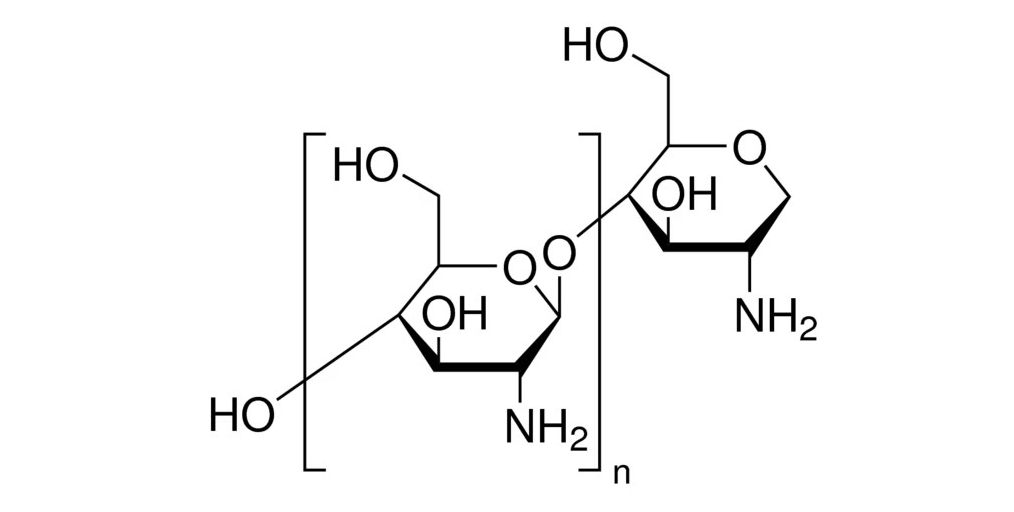Chitosan is a biopolymer derived from chitin, which is a natural polymer found in the shells of crustaceans like shrimp and crabs, as well as in the cell walls of fungi. Chitosan is created through the deacetylation of chitin, a process that removes the acetyl groups from chitin molecules.
Chemical Structure of Chitosan:
Chitosan has a linear structure composed of repeating units of glucosamine and N-acetylglucosamine. The basic structure of chitosan can be represented as:
(-GlcN- Ac-)n
Where GlcN represents glucosamine and Ac represents acetyl group.

Physical Properties of Chitosan:
- Solubility: Chitosan is typically insoluble in water at neutral pH due to its positively charged amino groups. However, it becomes soluble in acidic solutions (pH below 6.5) due to protonation of its amino groups, forming positively charged chitosan molecules.
- Charge: Chitosan is a polycationic polymer due to the presence of amino groups. This gives it unique properties, including the ability to interact with negatively charged substances, such as DNA, proteins, and some organic molecules.
- Molecular Weight: The molecular weight of chitosan can vary widely, and it influences its properties. Higher molecular weight chitosan tends to have better film-forming and mechanical properties.
- Biodegradability: Chitosan is biodegradable, making it environmentally friendly. It can be broken down by enzymes into non-toxic degradation products.
- Film-Forming: Chitosan can form films and coatings, which find applications in various industries, including food packaging and pharmaceuticals.
- Antimicrobial Activity: Chitosan exhibits antimicrobial properties, making it useful for various applications such as wound healing, water treatment, and food preservation.
- Biocompatibility: Chitosan is biocompatible and has been explored for biomedical applications, including drug delivery and tissue engineering.
- Gelling and Thickening: Chitosan can form gels in the presence of certain acids, which has applications in food and pharmaceutical industries as a gelling agent or thickener.
- Absorption and Adsorption: Chitosan can absorb and adsorb substances, including heavy metals and dyes, making it valuable in wastewater treatment.
It’s important to note that the exact properties of chitosan can vary based on factors like molecular weight, degree of deacetylation, and processing methods. Its versatility and biocompatibility have led to its utilization in a wide range of applications, from agriculture and cosmetics to medicine and environmental protection.
